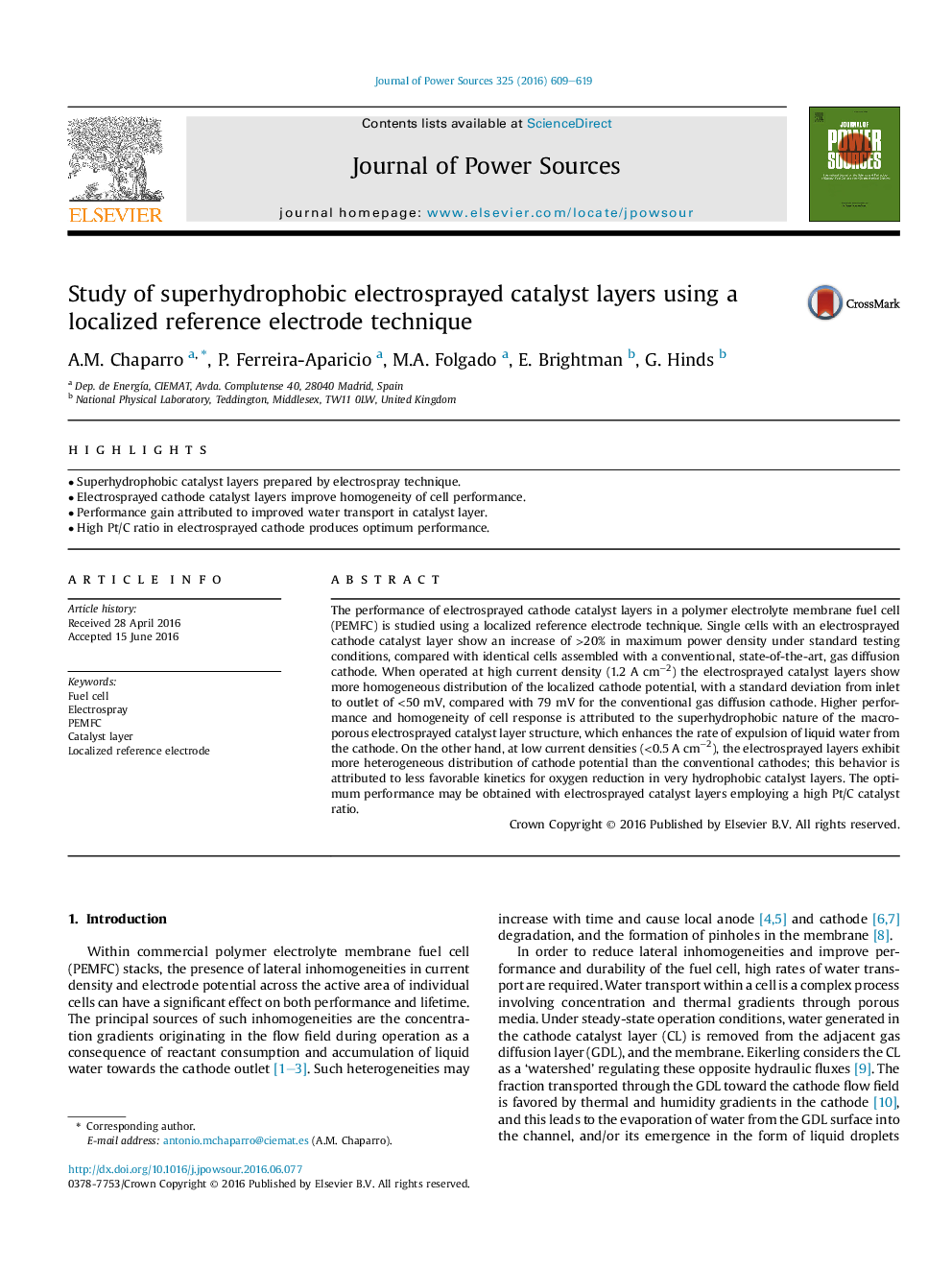| Article ID | Journal | Published Year | Pages | File Type |
|---|---|---|---|---|
| 7728021 | Journal of Power Sources | 2016 | 11 Pages |
Abstract
The performance of electrosprayed cathode catalyst layers in a polymer electrolyte membrane fuel cell (PEMFC) is studied using a localized reference electrode technique. Single cells with an electrosprayed cathode catalyst layer show an increase of >20% in maximum power density under standard testing conditions, compared with identical cells assembled with a conventional, state-of-the-art, gas diffusion cathode. When operated at high current density (1.2Â AÂ cmâ2) the electrosprayed catalyst layers show more homogeneous distribution of the localized cathode potential, with a standard deviation from inlet to outlet of <50Â mV, compared with 79Â mV for the conventional gas diffusion cathode. Higher performance and homogeneity of cell response is attributed to the superhydrophobic nature of the macroporous electrosprayed catalyst layer structure, which enhances the rate of expulsion of liquid water from the cathode. On the other hand, at low current densities (<0.5Â AÂ cmâ2), the electrosprayed layers exhibit more heterogeneous distribution of cathode potential than the conventional cathodes; this behavior is attributed to less favorable kinetics for oxygen reduction in very hydrophobic catalyst layers. The optimum performance may be obtained with electrosprayed catalyst layers employing a high Pt/C catalyst ratio.
Related Topics
Physical Sciences and Engineering
Chemistry
Electrochemistry
Authors
A.M. Chaparro, P. Ferreira-Aparicio, M.A. Folgado, E. Brightman, G. Hinds,
